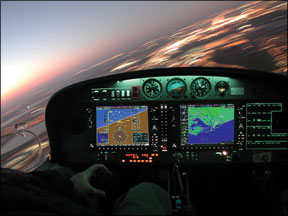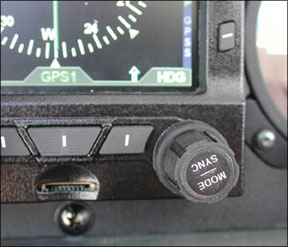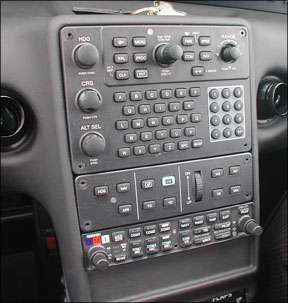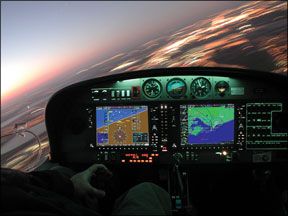Electronic flight displays-glass cockpits in the modern vernacular-were a novelty just six years ago. Then all at once, it seems, they were everywhere. Every new airplane is delivered equipped with some kind of glass and older airframes are seeing retrofits. Steam gauges are still in the majority, but theres enough glass out there to pose this question: Is it really better? More important, is glass actually more reliable and safer? Lacking a detailed blind study, a take-it-to-the-bank answer isnt possible and 288 would, in any case, be subject to debate. So we did the next best thing. We joined with our sister publication, Aviation Consumer, and surveyed more than 300 owners and operators of various types of EFIS displays. Via an online survey published by our news service, www.avweb.com, we asked owners to evaluate the very idea of electronic displays compared to conventional iron gyros and analog pitot-static instruments. Is the glass easier to use? Do owners like the displays? Whats the maintenance like? And above all, do these sophisticated but relatively untried systems inspire the confidence necessary to charge off into the gray innards of hard IMC? Both of our magazines have received e-mails complaining about system failures, and more than one of these has claimed reliability is worse than the industry claims. If this were true, we reasoned, our survey would turn up a substantial number of complaints. It didnt. While owners did report glass failures and several pilots reported more than one failure, there was no widespread pattern related to poor reliability. Overall, EFIS users-owners, renters, instructors-like the systems, no matter what type theyve flown. Most have suggestions for improvements, but only a tiny fraction say theyd prefer going back to steam gauges. Is Glass Safer? As the old Packard ad used to say, to find out, ask the man (or woman) who owns one. Or at least flies it on a regular basis. Based on the survey, we would say that glass users are overwhelmingly satisfied that glass systems are safer and provide benefits worth the cost and effort of having them. (Effort means training, and this is no trivial thing, as well examine later.) Eight of 10 survey respondents told us their expectations in flying with glass panels had been met, and an equal number said the systems have delivered on the promise. Thats another way of saying the level of disappointment is low. “Foolish to fly without this or similar technology these days. I fly in the busy Northeast and you need the MFD info to stay out of trouble,” wrote one user. “Better than expected. Save my life in a very difficult situation,” added Juan del Azar. “I expected a system that would greatly enhance safety and provide for a very high level of precise control and integration. I have found the Chelton FlightLogic system to exceed my expectations at every turn. I am amazed at how much easier and safer flights in IMC feel. I truly feel it is the best user interface with the most professional and logical control of any system available,” wrote Tim Olson. This leads us to insert a data point on who owns what portion of the EFIS market. The obvious answer is Garmin, but here are some numbers: Among our survey participants, 56 percent owned or had used Garmin G1000s, 25 percent used Avidyne Entegras, eight percent used Aspen Evolution systems-a relatively new product-and five percent each reported experience with Garmin G600 and Chelton FlightLogic systems. If theres brand loyalty, its not obvious. The level of satisfaction appeared higher among Avidyne users than of any other brand, but the numbers here are too small to make much of this. One thing we did notice is that Chelton FlightLogic users seem to rave about its highway-in-the-sky and military-inspired display symbology. Chelton was the first to field HITS in significant numbers. Not all users of EFIS are students of the finer points of glass symbology, but clearly, some are. “Chelton was the leader in HITS, flight path marker and other visual display symbology,” wrote Bill Woodu. We Came, We Saw A small fraction of the users we surveyed bought their EFIS because of certain features, such as the aforementioned HITS or the G1000s ability to reboot itself on the fly. But the large majority essentially sat down to dinner and ate what was put before them. “At the time I purchased the aircraft, this was installed and was the only option,” wrote Andrew Niemyer of the Avidyne Entegra system. Some owners have purchased used airplanes with glass already installed, some users are renters or students, so they basically adapt with no choice aforethought. 288 How does that work out for them? It varies, actually. To add some granularity to this question, we asked what users thought about display design, operating logic, knobology and general ergonomics. Does the PFD design work, for instance? If not, whats wrong with it? Ditto the MFD. Considering more than 80 percent of users like glass overall, they are rather less enthusiastic about the design of the PFD and MFD. Only 65 percent rated it as excellent, while 29 percent said it was good but not exceptional. Five percent said it was just adequate or needed work. So whats wrong with PFD design? “Theres a little too much knobology needed to sequence the system,” said Andrew Niemyer. “Plus the ILS glideslope indicator always takes a minute to visualize. Am I the needle or am I the indexer?” Wrote Alex Ho, “Pretty good in general, but I wish the engine gauges were larger.” And some users would like either configurable displays or a different design altogether. “Would prefer the G1000 PFD to have split screen PFD/MFD like G600 or Aspen. Map on the MFD is too far from line of sight,” said Scott James. We wouldnt say that sentiment is widespread, but it wasnt isolated, either. However, our survey showed a somewhat lower level of enthusiasm for the MFD. Only 50 percent rated it excellent, 42 percent good and the rest fair to mediocre. These are actually relatively good marks when you consider the complexity of the design challenge, but for some reason, owners are holding back in saying that theyre blown away by how good these things are. Whats up here? “Still too much clutter in some map modes,” said James. “The G600 is put to shame by the GPSmap 696,” added Brent Toavs. Said Alan Groves, “Avidynes implementation of WxWorx is primitive. You can get better weather on the GPSmap 496.” Even with these complaints, however, the consensus seems to be that despite their shortcomings, multi-function displays so improve situational awareness and access to flight information-especially engine monitoring-that they improve safety commensurate with their cost and the effort required to learn them. But learning them is a sore point. Training: No Slam Dunk A veritable cottage training industry has sprung up catering to pilots and owners who want to learn glass, especially Garmins G1000. Youd think, then, that owners would be thrilled with the choices. They dont seem to be. If there are any weak points in the fielding of glass to the pilot population, we think its in training. Plus, owners dont necessarily think these systems are easy to learn. Forty-two percent of survey respondents said the glass theyre using is “easy and logical” to operate, but more-51 percent-said it was learnable, but takes effort. Five percent told us the glass they use was quite difficult to learn. One might logically respond by saying pilots have always had to learn radios and nav gear, but somehow, mastering the TO/FROM indicator on a VOR head isnt in the same league as setting up an approach on a G1000. 288 So how are people learning these systems? Interesting question. Nearly a third-29 percent-taught themselves, 24 percent used factory training, 23 percent each used a local CFII or computer-based training. Twenty-five percent said their training was excellent, 45 percent said it was good and rest called it adequate to barely adequate. Where are the problems? “For those comfortable with technology, the training goes well. I would think it would be harder for a late adapter,” said one owner. “The biggest hurdle is being prepared for the rapid-fire sequences that need to be followed if you make an input mistake at a critical phase of flight such as an instrument approach. Deleting, reloading and staying oriented is stress Ive encountered a couple of times and havent enjoyed,” wrote Michael Christie. Implicit in this comment is the notion that if you master this equipment, its benefits are enhanced situational awareness and flight safety we couldnt have imagined 10 years ago. But if you get behind it-easy to do, even for experienced glass pilots-those advantages will be vanishingly small. For instance, if you encounter a terrain warning while struggling with an approach or frequency setup, it will take discipline to avoid sensory overload and stay on your game. Falling back to your lowest level of training is what will save you. “It takes a long time to see all the real world situations that you can get into. You have to fly into a lot of different airports to begin to see them all. I just came across a new one this past week. Learning to push the buttons is about 10 percent of the knowledge. The rest is how to utilize the system features to solve a real-world problem. Ive found that the G1000 doesnt do that any better than the Avidyne/430 combination. In some cases, the Avidyne with two 430s is superior,” adds Groves, who has used both systems. Maintenance, Reliability Our suspicion that glass breaks more often than manufacturers are willing to admit seems unfounded. Surveys like this offer ample, unimpeded opportunity for aggrieved owners to vent. We didnt see that. Altogether, 41 percent told us that maintenance of the glass system they had flown was lower than expected, while an equal number (44 percent) said it was about what they expected. Fifteen percent-not a trivial number, admittedly-said it was worse or a lot worse than expected. Nearly half reported experiencing one or two maintenance events, while 15 percent had three to five maintenance issues. Major issues seem neither rare nor common. “I needed both panels replaced in 2005 from 2004. All warranty work,” said David Isom. “Avidyne failure rate was far too high early on. With Release 7.0, its been improved significantly, plus recently Avidyne and its Mike Glover have really gotten the religion about customer service,” wrote Bob Bowen. Some maintenance complaints seem to relate to gremlins: “Random failures that cure on reboot. Hate being captive to Garmin memory cards only,” said one owner. “As with all computers, there can be glitches. You need to learn to troubleshoot but also learn to just leave it as is, fly the airplane, and fix it on the ground, with expert help, if necessary,” added Larry Noe. Picking the right shop also matters. Said Leo LeBoeuf, “When the aircraft is serviced by a good avionics shop, the problems are resolved. The Cessna dealer is clueless, as are some of the lesser quality avionics shops.” Conclusion Since we dont have anything approaching meaningful accident data, we can only base our conclusion on what EFIS users tell us. The clear message is that glass is great and that youll get out of it what you put into it, with the exception of money, which is, as we all know, a one-way trip. Owners were quite clear on the importance of training-not just initial training, but recurrent training, too. If you know only the surface of the system-say, one as complex as the G1000-you might well be better off on steam gauges and coffee-grinder radios. If glass you dont understand distracts you in a critical phase of flight, it will be more hindrance than help. As for reliability, owners are generally confident in these systems. A third told us their confidence couldnt be higher, while half said theyre satisfied. Ten percent said they worry a little. Worrying is not entirely a bad thing since it leads to planning and preparation, something you need whether you fly glass or not.






